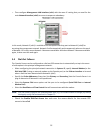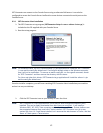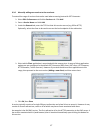
60
6. SECURE TUNNELING AND SDT CONNECTOR
Introduction
Each Console Server has an embedded SSH server and uses SSH tunneling. This enables one Console
Server to securely manage all the systems and network devices in the data center, using text-based
console tools (such as SSH, Telnet, SoL) or graphical desktop tools (VNC, RDP, HTTPS, HTTP, X11,
VMware, DRAC, iLO etc).
To set up Secure Tunnel access, the computer being accessed can be located on the same local network
as the Console Server, or attached to the Console Server via its serial COM port. The remote
User/Administrator then connects to the Console Server through an SSH tunnel (via dial-up, wireless or
ISDN modem); a broadband Internet connection; an enterprise VPN network or a local network.
-
To set up the secure SSH tunnel from the Client computer to the Console Server, you must install and
launch SSH client software on the User/Administrator’s computer. It is recommended that you use the
SDT Connector client software supplied with the Console Server to do this. SDT Connector is simple to
install and it auto-configures. It provides all your users with point-and-click access to all the systems and
devices in the secure network. With one click, SDT Connector sets up a secure SSH tunnel from the client
to the selected Console Server and then establishes a port forward connection to the target network
connected host or serial connected device. It will then execute the client application that will be used in
communicating with the host.
This chapter details the basic SDT Connector operations:
Configuring the Console Server for SSH tunneled access to network attached hosts and setting
up permitted Services and Users access (Section 6.1)
Setting up the SDT Connector client with gateway, host, service and client application details
and making connections between the Client computer and hosts connected to the Console
Server (Section 6.2)
Using SDT Connector to browser access the Management Console (Section 6.3)


















